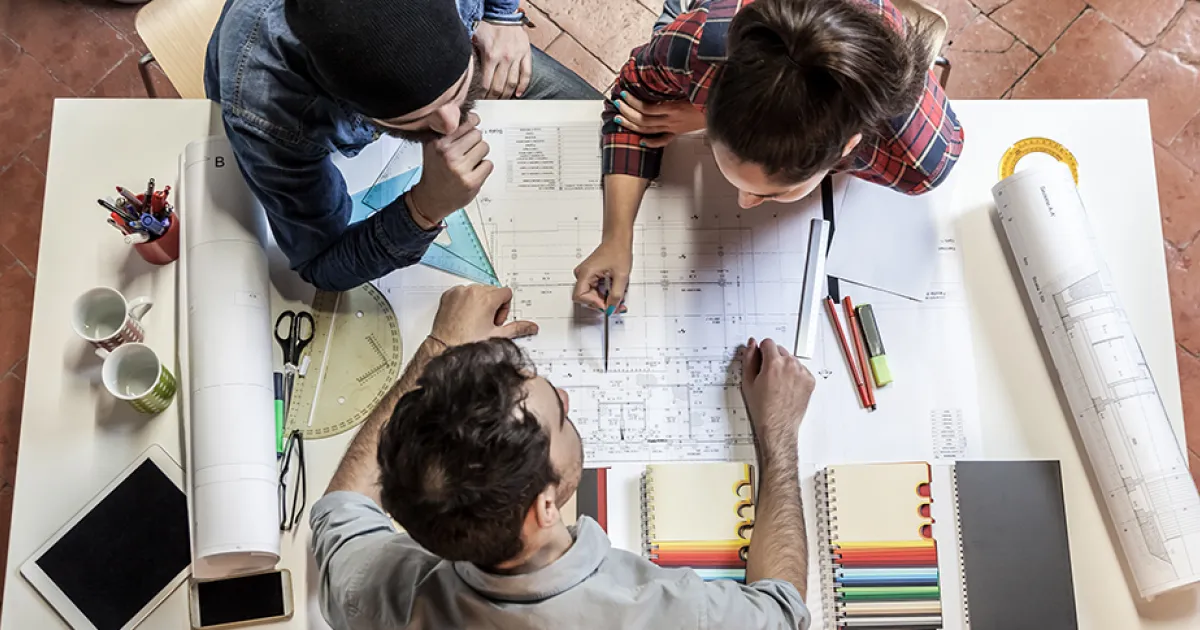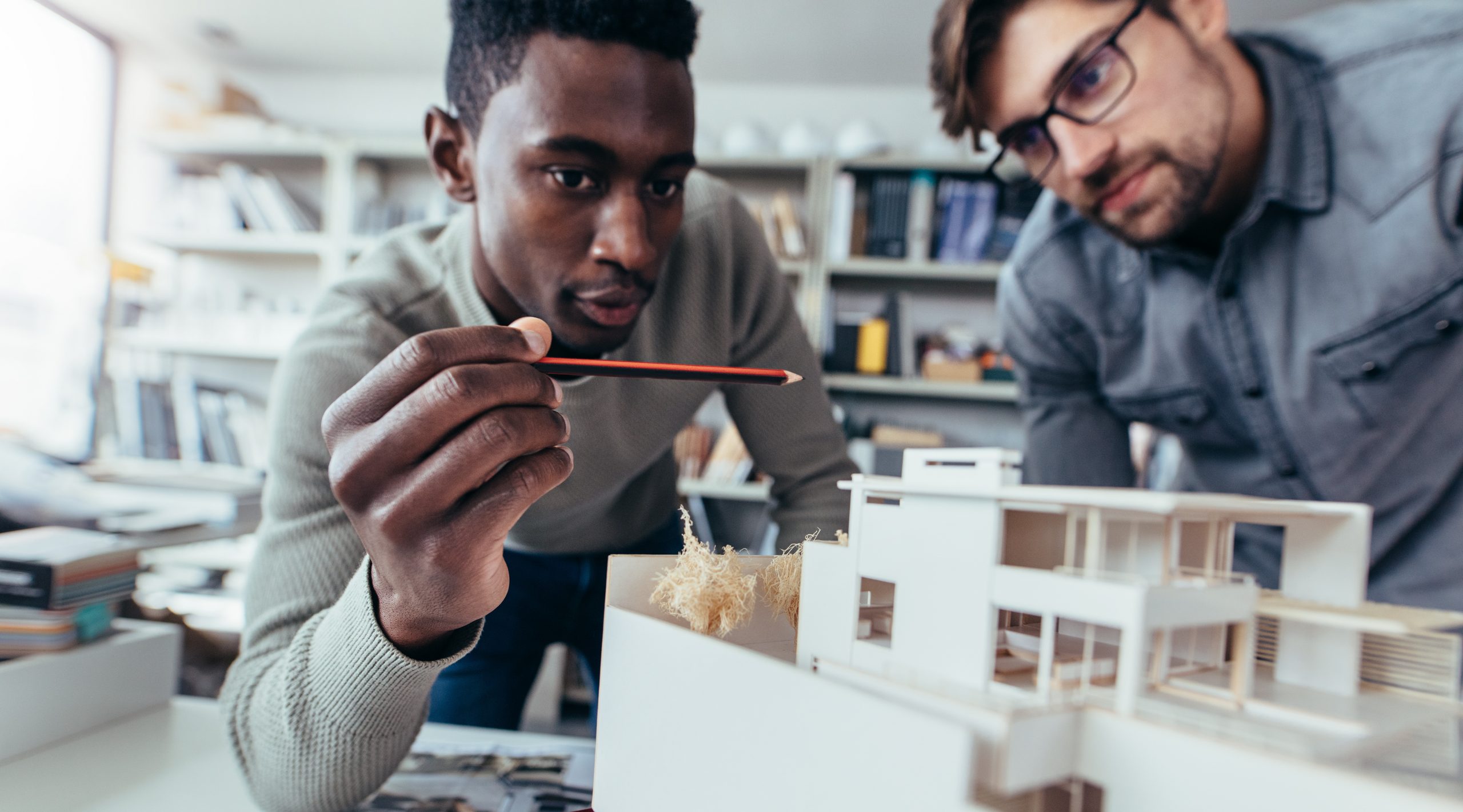Architect Services Clarified: What to Expect from Start to Finish
Architect Services Clarified: What to Expect from Start to Finish
Blog Article
The Function of Sustainability and Technology in Modern Architect Practices
Sustainability and technology are improving modern design in means you might not anticipate. By embracing environmentally friendly products and smart advancements, designers are not just developing structures; they're crafting atmospheres that improve our quality of life. This change isn't simply regarding looks or capability; it has to do with developing a responsible approach to our planet's future. What's driving this improvement, and exactly how can these adjustments influence your community?
The Value of Sustainable Architecture
Sustainable style is vital not just for the setting yet additionally for improving our lifestyle. You're not just minimizing your carbon footprint; you're producing spaces that advertise wellness and wellness when you welcome lasting style. Envision living in a home that uses all-natural light, improves air quality, and lowers energy prices. You'll feel a lot more connected and comfortable to nature.
In addition, sustainable design typically leads to more powerful areas. When structures are developed with green techniques, they can inspire others to do the same, cultivating a society of sustainability. You'll notice raised residential property values and a higher feeling of pride in your surroundings.
Finally, by prioritizing sustainability, you're buying the future. You're ensuring that future generations enjoy a much healthier earth and vibrant neighborhoods. So, when you consider your following project, think regarding just how sustainable design can elevate your life and those around you.
Innovative Materials Transforming Building Practices
As you explore cutting-edge materials in style, you'll find that biodegradable building materials are improving just how we think of sustainability. Recycled web content technologies are offering brand-new life to waste, while smart product modern technologies improve building effectiveness. These improvements not only advertise eco-friendliness but likewise press the boundaries of style.
Naturally Degradable Building Products
While traditional construction materials commonly contribute to environmental destruction, naturally degradable building and construction materials are emerging as a viable choice that changes structure methods. By including biodegradable alternatives right into your designs, you're not simply enhancing aesthetic appeal; you're also making a positive influence on the planet. As you adapt to these innovative materials, you'll discover that they supply resilience and adaptability, allowing you to create structures that line up with modern-day values of sustainability and duty.
Recycled Web Content Technologies
In recent years, ingenious products with high recycled content have actually changed structure practices, supplying designers amazing brand-new choices - Architect. You can now incorporate products like recycled steel, which not just decreases waste however likewise boasts impressive toughness. Recycled glass is another wonderful option, giving aesthetic appeal while decreasing environmental effect

Smart Material Technologies
Smart material technologies are reshaping the way you consider constructing techniques, using vibrant remedies that adapt to altering conditions. These cutting-edge products, such as self-healing concrete and thermochromic glass, enhance structure performance and sustainability. When damaged-- these improvements are no much longer simply principles, picture structures that can adjust to temperature adjustments or fix themselves. By incorporating smart products, you can develop energy-efficient layouts that react to their setting, lowering total power intake. The capacity to monitor and adapt in real-time streamlines maintenance and lengthens the life-span of buildings. As you accept these innovations, you're not just innovating; you're adding to a much more sustainable future in style, merging functionality with environmental obligation.
The Combination of Smart Technologies in Design
As innovation advances, integrating clever remedies into building style comes to be necessary for developing effective and lasting rooms. You can integrate wise technologies like constructing management systems, which enhance energy use and boost passenger convenience.
Including Net of Points (IoT) devices permits smooth communication among different building systems, allowing you to make data-driven decisions that improve capability. Smart products that respond to environmental changes can better enhance your layout, offering vibrant services to ever-changing problems.
Energy Effectiveness and Renewable Resource Solutions
While numerous engineers concentrate on visual appeals, prioritizing energy performance and sustainable energy options is essential for sustainable layout. You can start by including passive solar design, which maximizes natural light and warmth, reducing reliance on fabricated lights and heater. Utilize high-performance insulation and energy-efficient home windows to reduce energy loss.
Do not forget renewable power systems-- set up solar panels or wind turbines to generate clean power on-site. You can also consider including geothermal heating and cooling systems for an extra sustainable temperature law.
By additional hints selecting energy-efficient appliances and illumination, you'll not just lower energy intake but likewise reduced functional costs for constructing residents.
Integrating these concepts into your layouts not only benefits the atmosphere however also improves the structure's appeal and value. Ultimately, your commitment to energy performance and renewable resource will establish your projects apart in an open market.
Water Conservation Methods in Modern Style
Incorporating water conservation techniques right into modern design is necessary for creating sustainable structures that decrease environmental effect. You can achieve this by integrating rain harvesting systems, which keep and collect rain for watering and non-potable usages. Executing low-flow components and clever irrigation systems likewise lowers water intake, guaranteeing effective use throughout the building.
Consider using drought-resistant landscape design, which requires much less water and promotes biodiversity. Including absorptive paving products permits rainwater to penetrate the ground, minimizing runoff and recharging groundwater materials.
In addition, setting up greywater recycling systems can repurpose water from sinks and showers for toilet flushing or irrigation, additional saving resources.
The Impact of Biophilic Style on Health
Biophilic design brings nature inside, and you'll observe its positive impacts on your wellness and happiness. By improving indoor air high quality and attaching you with all-natural elements, these spaces can change your everyday experience. Allow's discover just how incorporating these functions can enhance your general health.
Nature's Impact on Health and wellness
When you integrate components of nature into your surroundings, it can substantially improve your mental and physical health and wellness. Biophilic style, which emphasizes natural light, plants, and organic materials, fosters a sense of connection to the outdoors. Accepting biophilic style is an action toward a much healthier way of life.
Enhancing Indoor Air High Quality
While lots of individuals concentrate on aesthetics and functionality in design, enhancing interior air top quality plays an essential role in your general well-being. By integrating biophilic style components, you can enhance air top quality normally. Prioritizing these aspects in your style will not just raise your room yet additionally advertise a sense of calm and wellness.
Link With Natural Environments
When you get in touch with all-natural components in your room, you not just improve its aesthetic allure yet also considerably improve your health. Biophilic style motivates you to include attributes like plants, all-natural light, and organic materials. These aspects create a relaxing environment, decreasing tension and anxiousness. Study reveals that being around nature can enhance your state of mind and cognitive function, helping you really feel a lot more concentrated and efficient. You may observe far better air top quality and raised comfort when you welcome the outdoors inside. Basic changes, like including a living wall or big windows, can greatly impact your experience (Architect). Eventually, integrating nature into your atmosphere leads you to a healthier, happier way of life, fostering a deeper link to the world around you.
Future Fads in Lasting Building Practices
As the globe Read Full Report encounters pushing ecological challenges, architects are increasingly welcoming cutting-edge strategies to sustainability that redefine exactly how we design and construct. You'll see a surge in biophilic layout, incorporating nature into urban rooms to boost wellness and lower energy usage. Smart technologies, like AI and IoT, are streamlining energy administration in structures, enhancing resource use, and lessening waste.
Additionally, modular building and construction is acquiring grip, permitting much faster, extra efficient building procedures while lowering environmental influence. The use of sustainable products, such as redeemed wood and recycled metals, is ending up being common technique. As you check out these patterns, anticipate a shift toward circular style, stressing the lifecycle of products and promoting reuse and recycling.
These forward-thinking techniques not just address environmental concerns however additionally develop much healthier, a lot more resistant communities. By remaining educated about these fads, you can help shape a lasting future in design.
Regularly Asked Inquiries
How Can Sustainability Affect Job Costs and Spending Plans?
Sustainability can substantially affect job expenses and spending plans. You could find that initial financial investments in eco-friendly materials or modern technologies result in long-lasting cost savings through energy performance, decreased waste, and potential government incentives, ultimately stabilizing the total costs.
What Qualifications Exist for Sustainable Architecture?
You'll discover a number of accreditations for sustainable style, consisting of LEED, BREEAM, and the Living Structure Challenge. These qualifications assist you demonstrate your dedication to sustainability and can enhance your project's reputation and charm to customers.
Just How Does Local Society Impact Lasting Layout?
Regional culture shapes lasting design why not try this out by mirroring community materials, worths, and customs. You'll find that integrating neighborhood aesthetics and techniques not just respects heritage but likewise improves the functionality and approval of your building tasks.
What Function Does Customer Education Play in Lasting Practices?
Client education's important for promoting sustainable methods. When you inform customers about benefits, costs, and ecological influences, you empower them to make enlightened decisions, cultivating a collective strategy that improves the task's total sustainability.

Exactly How Can Architects Determine the Success of Sustainability Efforts?
You can determine the success of sustainability campaigns by tracking power usage, assessing product effectiveness, and event comments from clients. Regular audits and comparisons against standards will certainly aid you improve your strategies and display enhancements properly.
By integrating smart products, you can develop energy-efficient designs that react to their setting, decreasing total energy usage.While several designers concentrate on looks, focusing on energy efficiency and sustainable power solutions is crucial for sustainable style. Biophilic design, which stresses natural light, plants, and organic materials, fosters a feeling of connection to the outdoors. Biophilic layout motivates you to incorporate attributes like plants, all-natural light, and organic products. As you check out these fads, expect a change toward round style, highlighting the lifecycle of products and promoting reuse and recycling.
Report this page